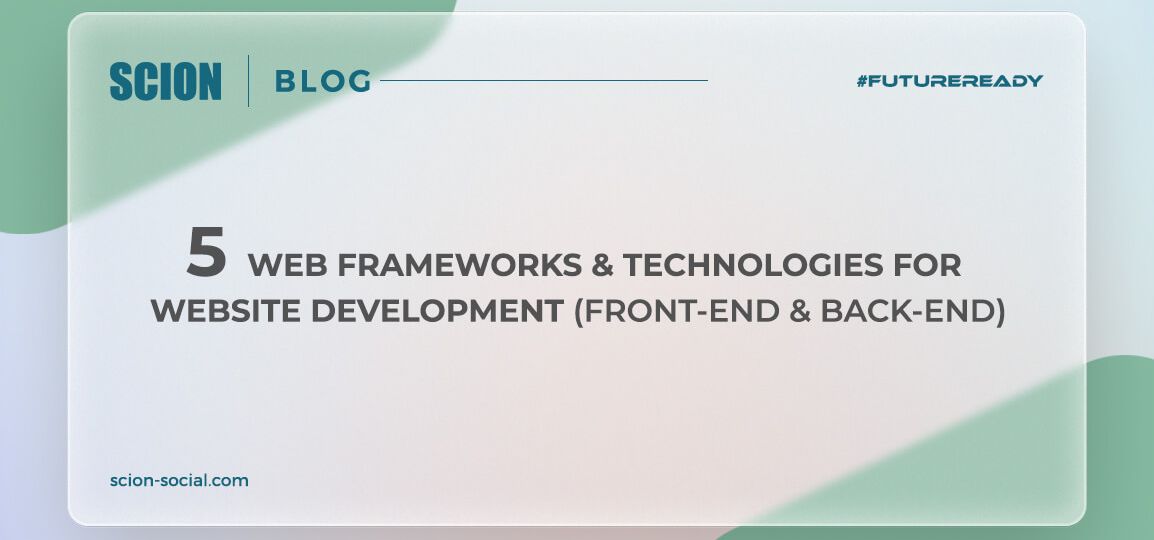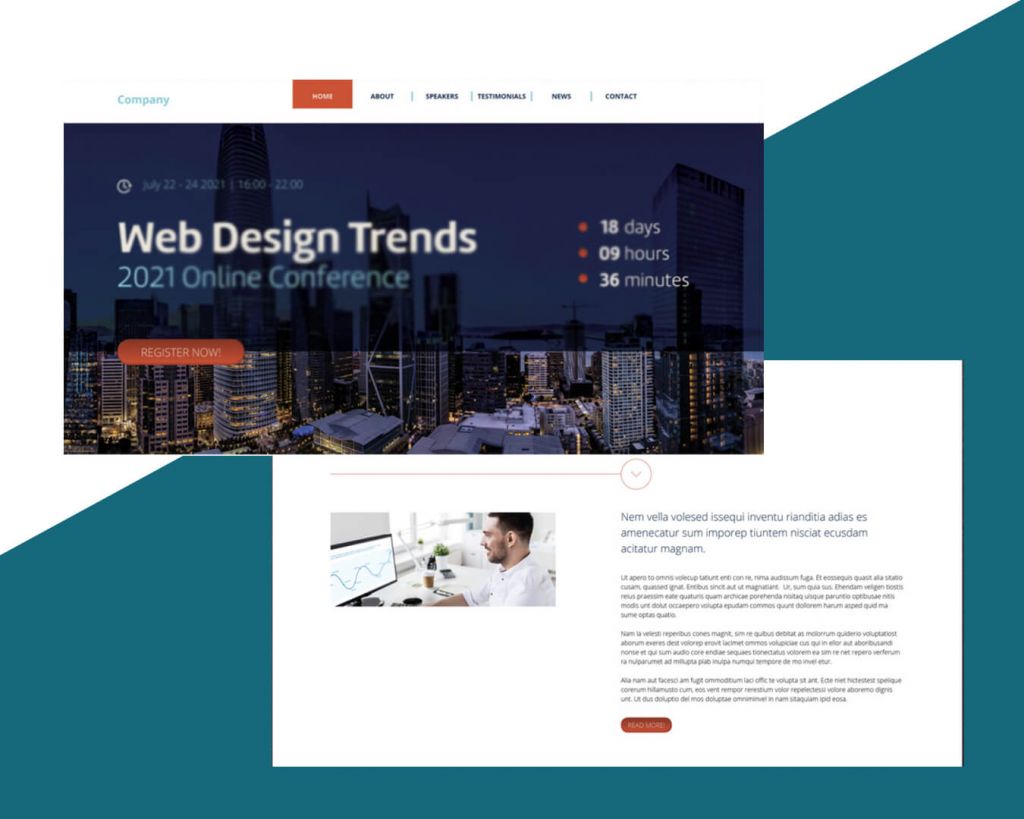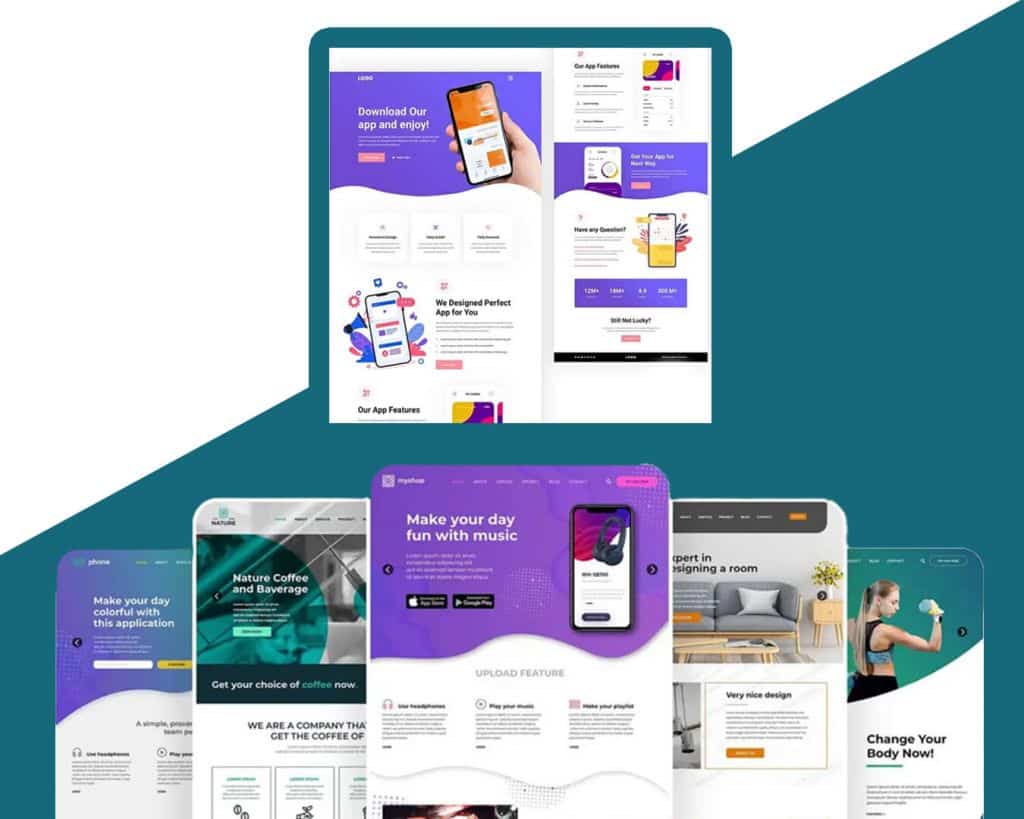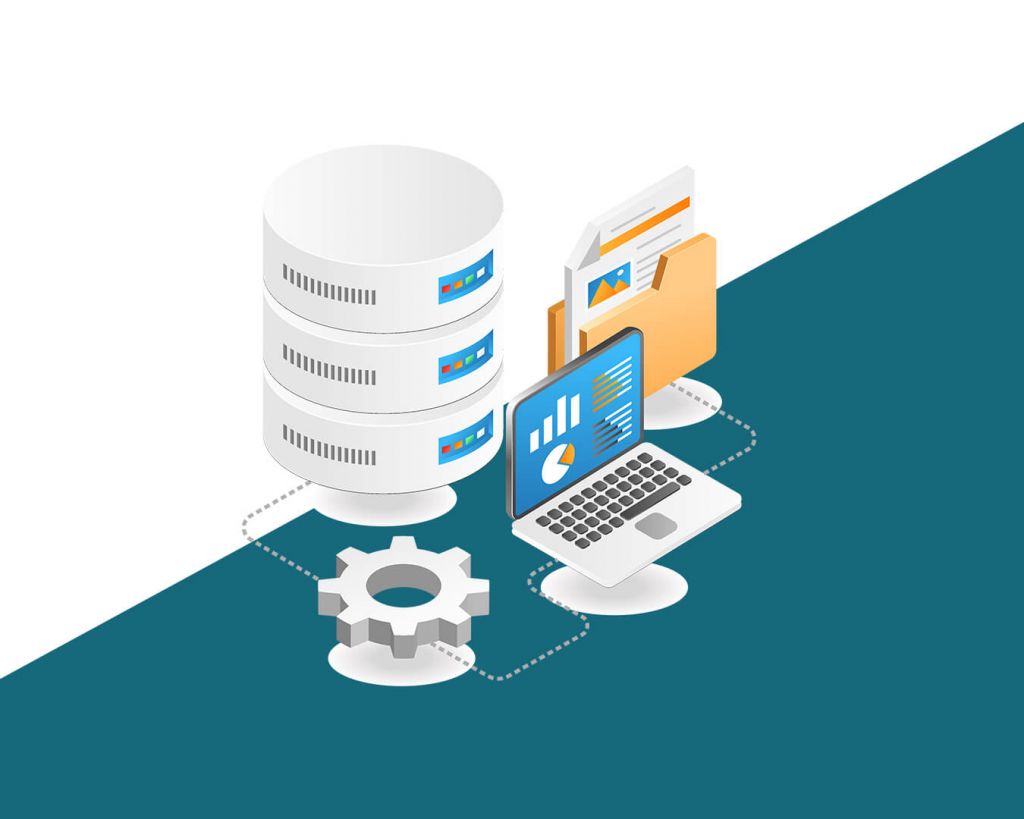
Last Updated: June 19, 2024
The Importance of Staying Ahead of The Curve with Modern Web Frameworks

Imagine this: a potential customer visits your website, but instead of sleek design and intuitive navigation, they’re greeted by a clunky, outdated mess. Frustration sets in, they click away, and your business suffers. In today’s fast-paced digital age, staying ahead of the curve with website development frameworks isn’t just a suggestion, it’s a necessity!
This blog explores how to leverage the latest technologies to create visually appealing, intuitive, and highly functional websites that keep users engaged and drive business success.
What we will cover in this blog:
- Front-End Frameworks
- Back-End Frameworks
Front-End Frameworks: Shaping the User Experience
In the ever-evolving landscape of web development, front-end web technologies have emerged as powerful tools for crafting visually stunning and highly interactive user interfaces.
The frameworks not only streamline the development process but also ensure consistency, responsiveness, and a seamless user experience across various devices and platforms. Let’s explore some of the most popular options and the unique value they bring to your projects:
- Angular: Structure and Scalability: For complex web applications, Angular’s comprehensive framework and use of TypeScript provide a structured and highly scalable development environment.
- Bootstrap: Responsive Design Made Easy: Effortlessly craft beautiful, mobile-friendly websites with Bootstrap’s extensive library of pre-built components and customizable layouts.
- React: Component-Based Efficiency: Build dynamic and performant UIs with React’s modular component approach. Reusable components and a virtual DOM ensure efficient updates and a smooth user experience.
- jQuery: DOM Manipulation Mastery: Breathe life into your web pages with jQuery’s intuitive syntax for DOM manipulation, animations, and event handling. While not a full framework, jQuery’s versatility makes it a valuable tool for front-end developers.
- Ember: Convention Over Configuration: Ember streamlines development with a clear structure and “convention over configuration” approach. This promotes rapid prototyping and reduces boilerplate code, making it ideal for building ambitious web applications.
Back-End Frameworks: The Engine Room
The back-end is the behind-the-scenes powerhouse that ensures smooth website operation. Back-end frameworks provide the essential infrastructure and tools for handling server-side logic, data processing, and integration with databases and other systems. These frameworks play a crucial role in building robust, scalable, and efficient web applications.
Each of these frameworks offer unique strengths and capabilities, catering to different project requirements and developer preferences:
- Django, written in Python, is renowned for its ease of use and flexibility. It follows a convention-over-configuration approach, streamlining development and promoting best practices. Django’s powerful features, such as its built-in admin interface and Object-Relational Mapping (ORM), make it a popular choice for building complex web applications.
- Ruby on Rails, another open-source framework, is known for its simplicity and scalability. It follows the Model-View-Controller (MVC) architectural pattern and emphasizes convention over configuration, allowing developers to focus on building features rather than configuring codes. Ruby on Rails has a vibrant community and is used by many companies, such as Shopify and Airbnb.
- Laravel, a free and open-source PHP framework, is designed for building MVC (Model-View-Controller) web applications. It offers a rich ecosystem of tools and features, including an expressive syntax, robust database integration, and a modular packaging system. Laravel’s focus on developer productivity and its comprehensive documentation make it a popular choice among PHP developers.
- Node.js, while not a framework itself, is a JavaScript runtime environment that allows developers to use JavaScript for server-side scripting. It is lightweight, fast, and highly scalable, making it a popular choice for building modern web applications, real-time applications, and APIs. Express.js, built on top of Node.js, is a flexible and minimalist web framework that provides a robust foundation for web and mobile app development.
- Express.js, a minimalistic and flexible web application framework for Node.js. Built on top of Node.js, Express provides a robust set of features for web and mobile application development. Its simplicity and lightweight nature make it an ideal choice for building fast and scalable applications.
For web and mobile application development, Express.js integrates seamlessly with Node.js, enabling developers to leverage the power of JavaScript on both the client and server sides. This approach promotes code reuse and simplifies the development process, as developers can share code between the front-end and back-end components of their applications.
These back-end frameworks empower developers to build secure, efficient, and scalable web applications by providing a structured approach, pre-built components, and a wealth of tools and libraries.
How to Choose the Right Web Development Framework
When you’re selecting a web development framework, it’s crucial to consider several factors to ensure the best fit for your project’s requirements. Here are some key considerations:
Project Complexity: Assess the scope and complexity of your project. Is it a simple website or a more intricate web application? Frameworks like React and Angular excel at handling complex user interfaces and single-page applications, while lighter frameworks like Bootstrap or Svelte may be better suited for simpler projects.
Desired Features: Evaluate the specific features and functionalities you need for your project. Do you require robust authentication and authorization capabilities? Or do you prioritize real-time updates and seamless data synchronization? Different frameworks offer varying strengths and specializations, so choosing one that aligns with your desired features can streamline development.
Team Skillset: Consider the existing expertise and experience within your development team. If your team is well-versed in a particular programming language or framework, leveraging that knowledge can accelerate development and reduce the learning curve. However, if your team is open to learning new technologies, exploring cutting-edge frameworks could be a viable option.
Performance and Scalability: Assess the performance and scalability requirements of your project. Frameworks like Node.js and Express.js are known for their high performance and scalability, making them suitable for large-scale applications with heavy traffic. On the other hand, frameworks like Ruby on Rails or Django may be better suited for projects with more modest performance needs.
Community and Ecosystem: A vibrant and active community surrounding a framework can be a significant advantage. Strong community support often translates to better documentation, more third-party libraries and plugins, and faster issue resolution. Frameworks like React, Angular, and Laravel boast large and engaged communities, which can be invaluable resources during development.
When you carefully evaluate these factors, you can make an informed decision and select a web development framework that aligns with your project’s needs, your team’s expertise, and your long-term goals. Remember, the right framework can streamline development, enhance productivity, and ultimately contribute to the success of your web project.
Staying Ahead with Modern Web Frameworks
Leveraging modern front-end frameworks allows you to shape a seamless user experience, with responsive designs that adapt flawlessly to any screen size. Intuitive interfaces, smooth interactions, and lightning-fast performance are all hallmarks of websites built with the latest front-end tools.
On the back-end, robust and efficient frameworks ensure your website operates smoothly behind the scenes, delivering a reliable and scalable experience. From handling complex data processing to integrating with third-party services, modern back-end frameworks provide the power and flexibility to tackle any challenge.
Ultimately, investing in modern frameworks is an investment in your business’s success, enabling you to deliver exceptional user experiences that drive engagement, conversions, and long-term growth.
P.S. No sales pitch here, but we do have amazing digital marketing content on our blogs. Check it out!
FAQs
WHAT IS THE DIFFERENCE BETWEEN A LIBRARY AND A FRAMEWORK?
The main difference between a library and a framework is that a library provides reusable code that can be called from your code, whereas a framework defines how your code should be written.
WHAT IS THE DIFFERENCE BETWEEN FRONT-END AND BACK-END?
A website’s front end is the part where users interact directly and what they see on their screen.
The back-end is the server-side of the website where all the behind-the-scenes programming and functioning happens. In a nutshell, the front-end is what the user sees, the back-end is the functioning and systems.
WHICH FRAMEWORK IS BETTER FOR WEB DEVELOPMENT?
Here are the top web development frameworks from our list:
- Bootstrap
- React
- Angular
- Jquery
- Ember
- Django
- Ruby on Rails
- Laravel
- Node.js
- Express.js
IS REACT BETTER OR ANGULAR?
Both React and Angular are popular front-end JavaScript frameworks.
They both have pros and cons but React is generally considered easier and is preferred by some because of its virtual DOM implementation and advanced rendering optimizations.



